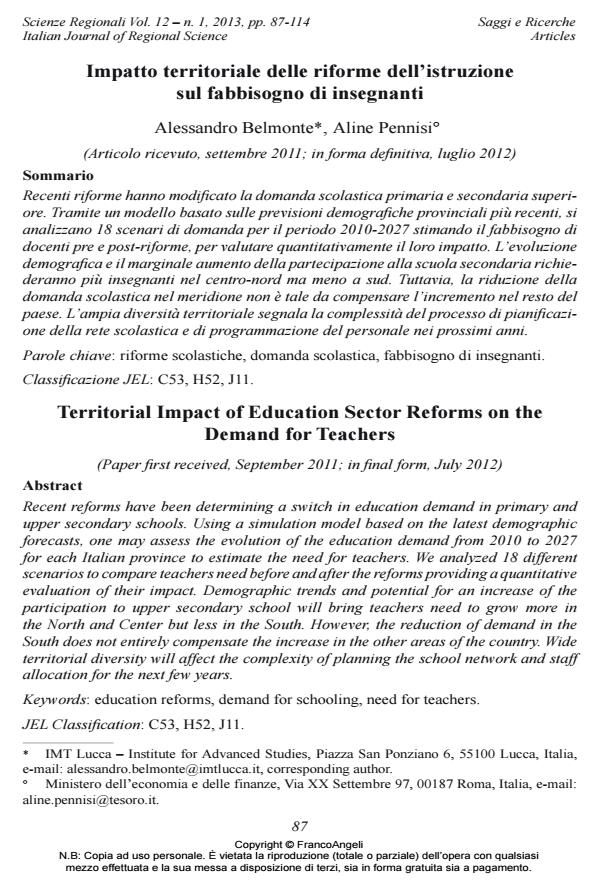Territorial Impact of Education Sector Reforms on the Demand for Teachers
Journal title SCIENZE REGIONALI
Author/s Alessandro Belmonte, Aline Pennisi
Publishing Year 2013 Issue 2013/1
Language Italian Pages 28 P. 87-114 File size 567 KB
DOI 10.3280/SCRE2013-001005
DOI is like a bar code for intellectual property: to have more infomation
click here
Below, you can see the article first page
If you want to buy this article in PDF format, you can do it, following the instructions to buy download credits

FrancoAngeli is member of Publishers International Linking Association, Inc (PILA), a not-for-profit association which run the CrossRef service enabling links to and from online scholarly content.
Recent reforms have been determining a switch in education demand in primary and upper secondary schools. Using a simulation model based on the latest demographic forecasts, one may assess the evolution of the education demand from 2010 to 2027 for each Italian province to estimate the need for teachers. We analyzed 18 different scenarios to compare teachers need before and after the reforms providing a quantitative evaluation of their impact. Demographic trends and potential for an increase of the participation to upper secondary school will bring teachers need to grow more in the North and Center but less in the South. However, the reduction of demand in the South does not entirely compensate the increase in the other areas of the country. Wide territorial diversity will affect the complexity of planning the school network and staff allocation for the next few years.
Keywords: Education reforms, demand for schooling, need for teachers.
Jel codes: C53, H52, J11
Alessandro Belmonte, Aline Pennisi, Impatto territoriale delle riforme dell’istruzione sul fabbisogno di insegnanti in "SCIENZE REGIONALI " 1/2013, pp 87-114, DOI: 10.3280/SCRE2013-001005